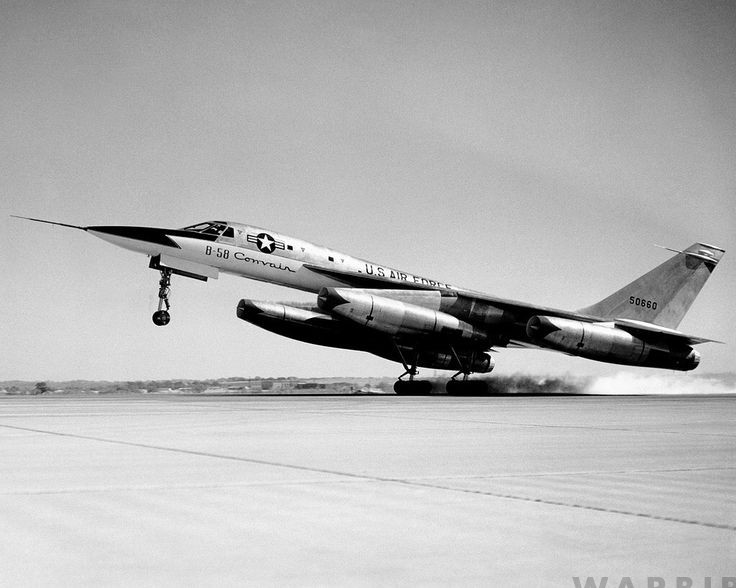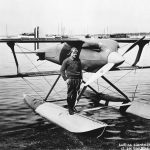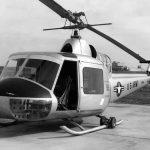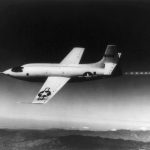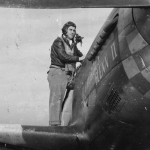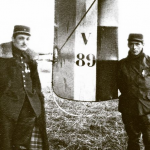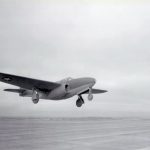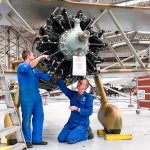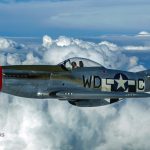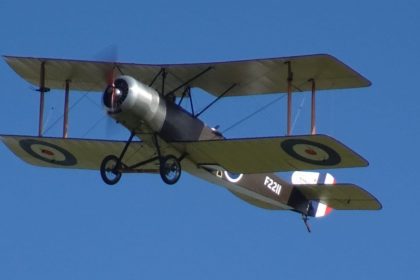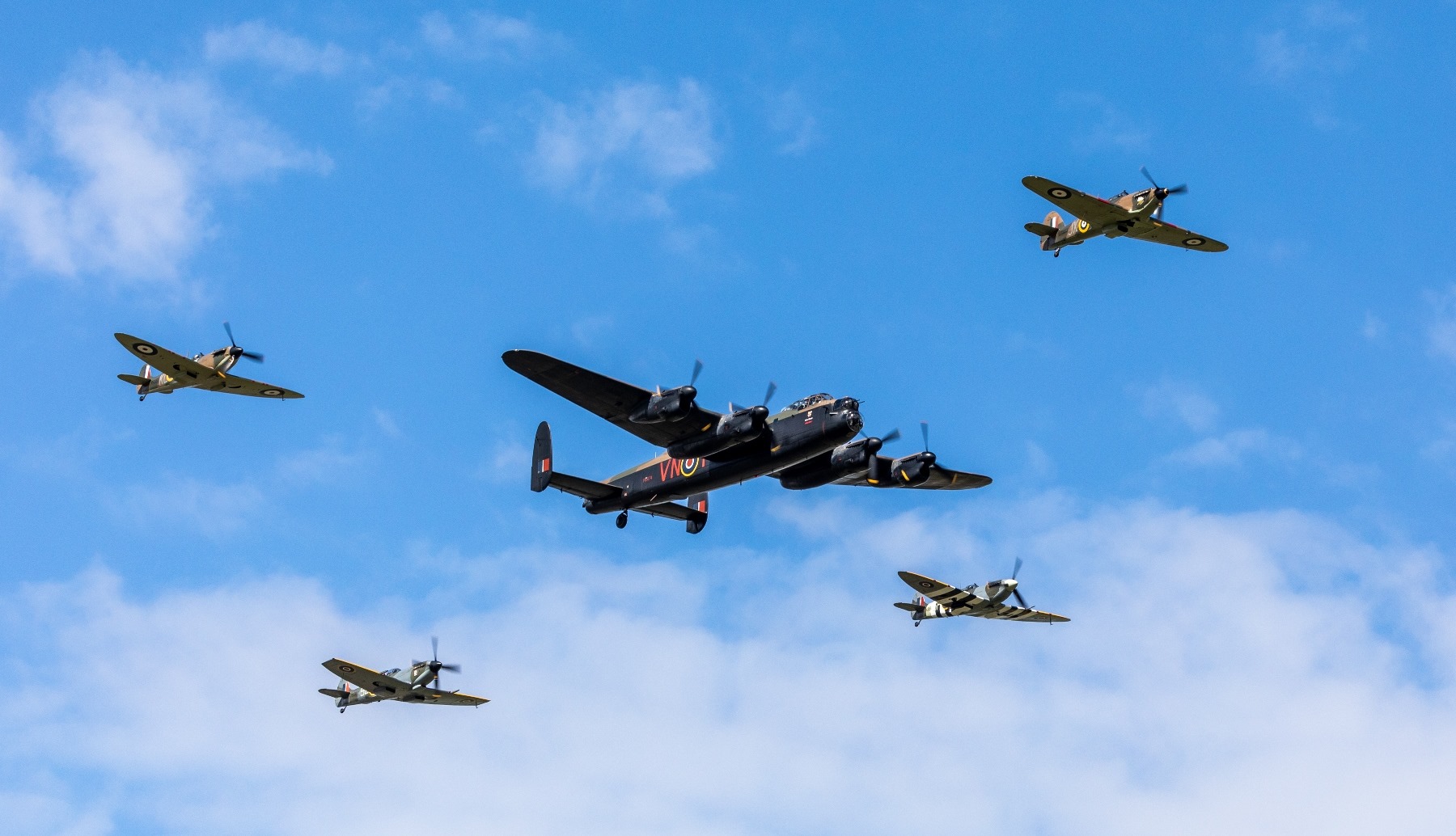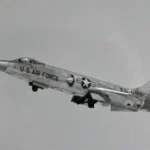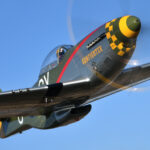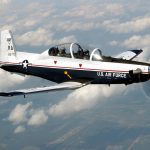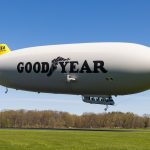by Bryan R. Swopes of This Day in Aviation
On November 11, 1956, in Fort Worth, Texas, Convair’s Chief Test Pilot, Beryl Arthur Erickson, takes the first prototype XB-58, serial number 55-0660, on its first flight.
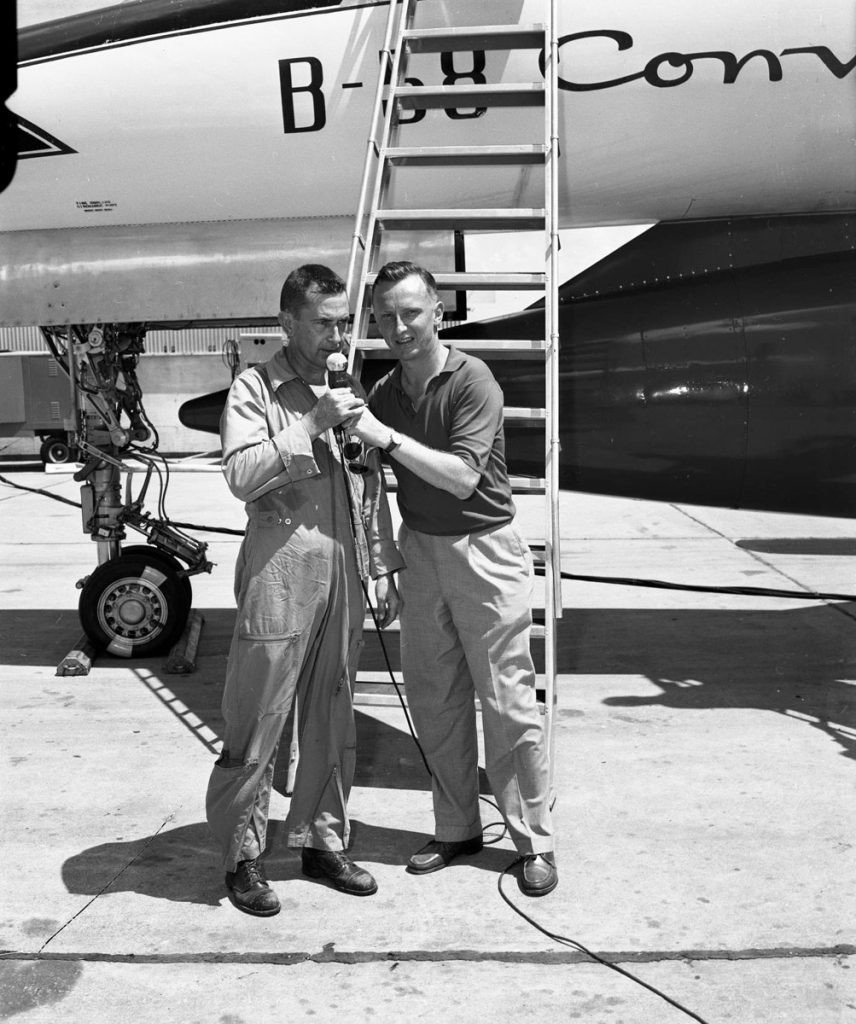
The B-58 Hustler was a high-altitude Mach 2 strategic bomber that served with the United States Air Force from 1960 to 1970. It was crewed by a pilot, navigator/bombardier, and a defensive systems operator, located in individual cockpits. The aircraft is a delta-winged configuration similar to the Convair F-102A Delta Dagger and F-106 Delta Dart supersonic interceptors.
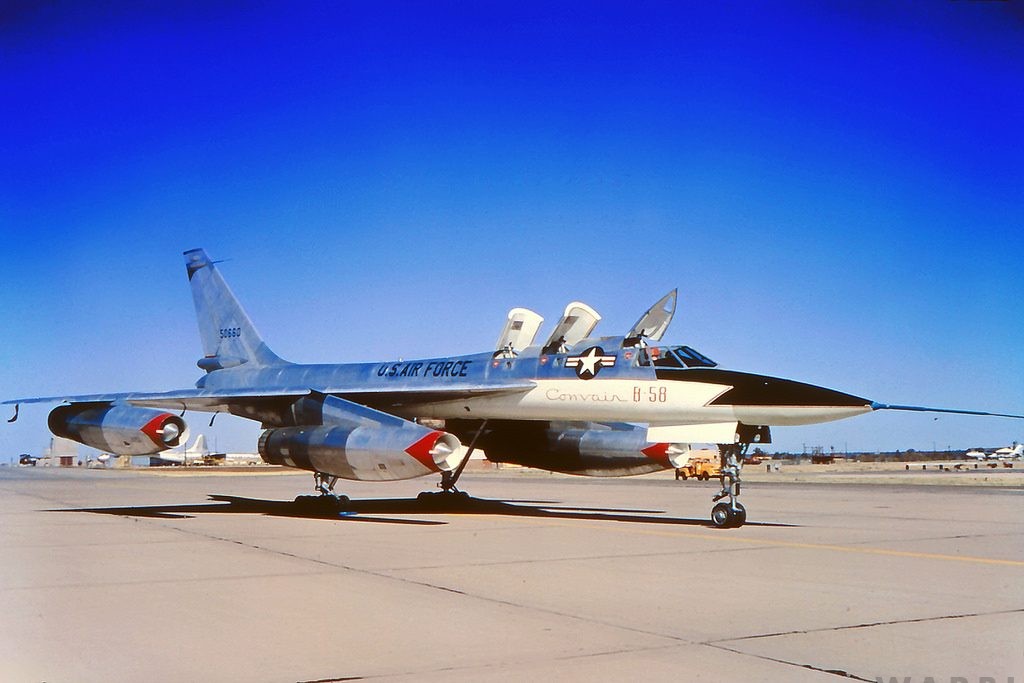
The Hustler is 96 feet, 10 inches (29.515 meters) long, with a wingspan of 56 feet, 10 inches (17.323 meters), and an overall height of 31 feet 5 inches (9.576 meters). The fuselage incorporates the “area rule” which resulted in a “wasp waist” or “Coke bottle” shape for a significant reduction in aerodynamic drag. The airplane’s only control surfaces are two “elevons” and a rudder, and there are no flaps.
The B-58’s delta wing has a total area of 1,542.5 square feet (143.3 square meters) and the leading edges are swept back at a 60° angle. The wing has an angle of incidence of 3° and 2° 14′ dihedral (outboard of Sta. 56.5). The B-58A had an empty weight of 51,061 pounds (23161 kilograms), or 53,581 pounds (24,304 kilograms) with the MB-1 pod. The maximum takeoff weight was 158,000 pounds (71,668 kilograms).
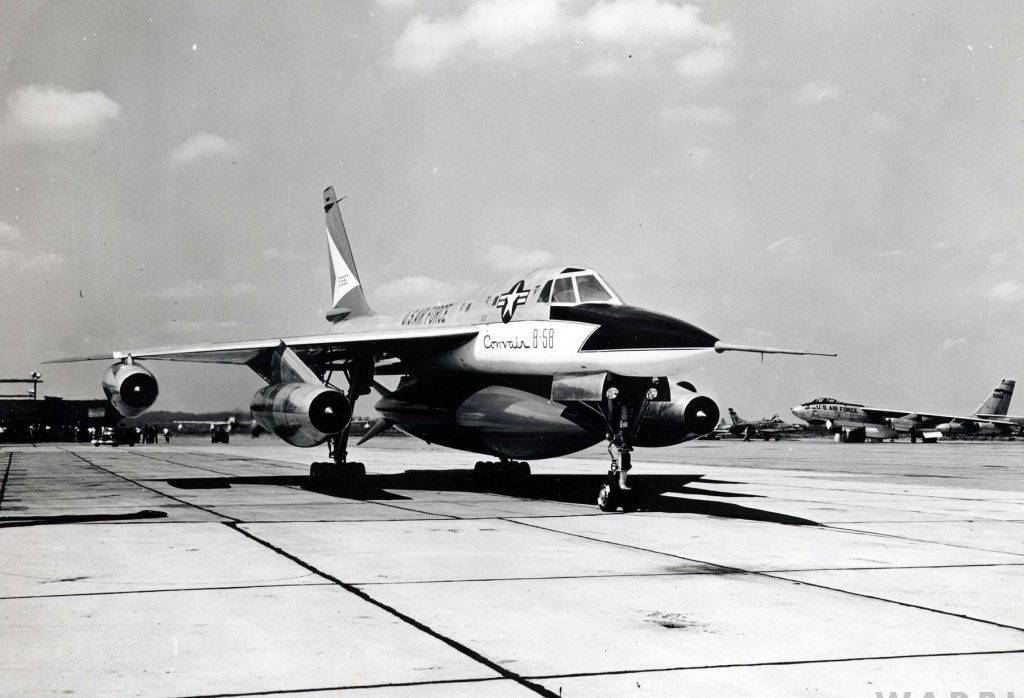
The B-58A was powered by four General Electric J79-GE-5 axial-flow after burning turbojet engines, suspended under the wings from pylons. This was a single-shaft engine with a 17-stage compressor and 3-stage turbine. It had a Normal Power rating of 9,700 pounds of thrust (43.148 kilonewtons). The Military Power rating was 10,000 pounds (44.482 kilonewtons), and it produced a maximum of 15,600 pounds (69.392 kilonewtons) at 7,460 r.p.m., with afterburner. The J79-GE-5 was 16 feet, 10.0 inches (5.131 meters) long, and 2 feet, 11.2 inches (0.894 meters) in diameter. It weighed 3,570 pounds (1,619 kilograms).
The bomber had a cruise speed of 544 knots (626 miles per hour/1,007 kilometers per hour) and a maximum speed of 1,147 knots (1,320 miles per hour/2,124 kilometers per hour) at 67,000 feet (20,422 meters). The B-58A had a combat radius of 4,225 nautical miles (4,862 statute miles/7,825 kilometers). Its maximum ferry range was 8,416 nautical miles (9,685 statute miles/15,586 kilometers).
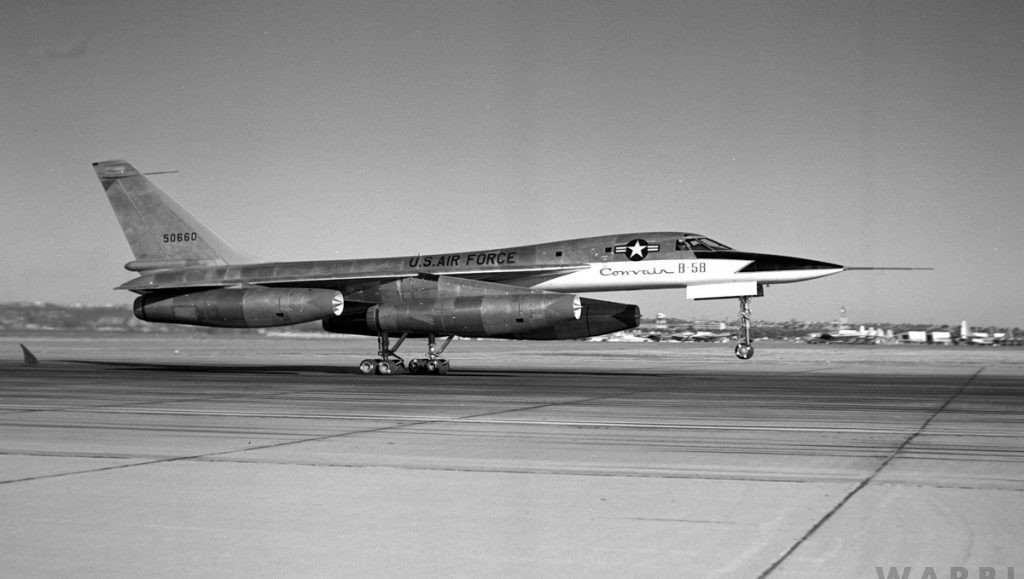
The B-58 weapons load was a combination of Mark 39, B43, or B61 thermonuclear bombs. The weapons could be carried in a jettisonable centerline pod, which also carried fuel. The four of the smaller bombs could be carried on underwing hardpoints. There was a General Electric M61 20 mm rotary cannon mounted in the tail, with 1,200 rounds of ammunition, and controlled by the Defensive Systems Officer.
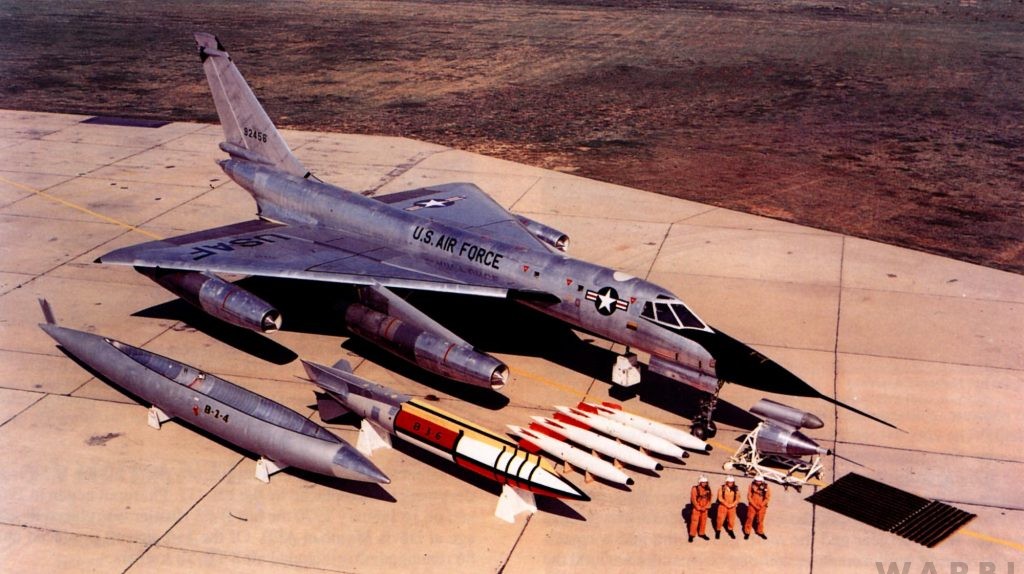
116 were built and they served the Strategic Air Command until January 1970 when they were sent to Davis-Monthan AFB, Tucson, Arizona for long-term storage. Convair XB-58 55-0660 was transferred to Kelly Air Force Base, Texas, 15 March 1960, for use as a ground instruction airframe. It was scrapped sometime later.
For more aviation anniversaries please visit www.thisdayinaviation.com







